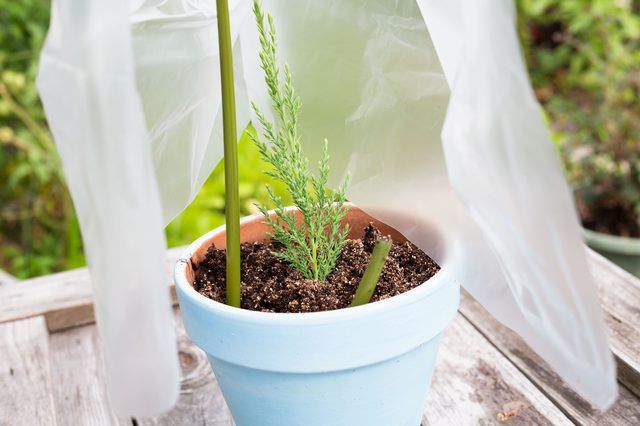Bulbs
Flower Basics
Flower Beds & Specialty Gardens
Flower Garden
Garden Furniture
Garden Gnomes
Garden Seeds
Garden Sheds
Garden Statues
Garden Tools & Supplies
Gardening Basics
Green & Organic
Groundcovers & Vines
Growing Annuals
Growing Basil
Growing Beans
Growing Berries
Growing Blueberries
Growing Cactus
Growing Corn
Growing Cotton
Growing Edibles
Growing Flowers
Growing Garlic
Growing Grapes
Growing Grass
Growing Herbs
Growing Jasmine
Growing Mint
Growing Mushrooms
Orchids
Growing Peanuts
Growing Perennials
Growing Plants
Growing Rosemary
Growing Roses
Growing Strawberries
Growing Sunflowers
Growing Thyme
Growing Tomatoes
Growing Tulips
Growing Vegetables
Herb Basics
Herb Garden
Indoor Growing
Landscaping Basics
Landscaping Patios
Landscaping Plants
Landscaping Shrubs
Landscaping Trees
Landscaping Walks & Pathways
Lawn Basics
Lawn Maintenance
Lawn Mowers
Lawn Ornaments
Lawn Planting
Lawn Tools
Outdoor Growing
Overall Landscape Planning
Pests, Weeds & Problems
Plant Basics
Rock Garden
Rose Garden
Shrubs
Soil
Specialty Gardens
Trees
Vegetable Garden
Yard Maintenance
How to Propagate Cuttings of Juniper
How to Propagate Cuttings of Juniper. Cuttings from your healthiest juniper (Juniperus spp.) trees and bushes effectively clone the plant so any new plants have the same desirable qualities. Junipers, which grow in U.S. Department of Agriculture plant hardiness zones 3 through 9, come in two main varieties. The prostrate forms, which grow as...
Cuttings from your healthiest juniper (Juniperus spp.) trees and bushes effectively clone the plant so any new plants have the same desirable qualities. Junipers, which grow in U.S. Department of Agriculture plant hardiness zones 3 through 9, come in two main varieties. The prostrate forms, which grow as low-growing, spreading shrubs, root most readily from cuttings. The upright varieties that resemble trees, are more difficult or they may take longer to produce roots. Take juniper cuttings in summer as the new wood begins to harden and mature, but before it becomes completely woody.
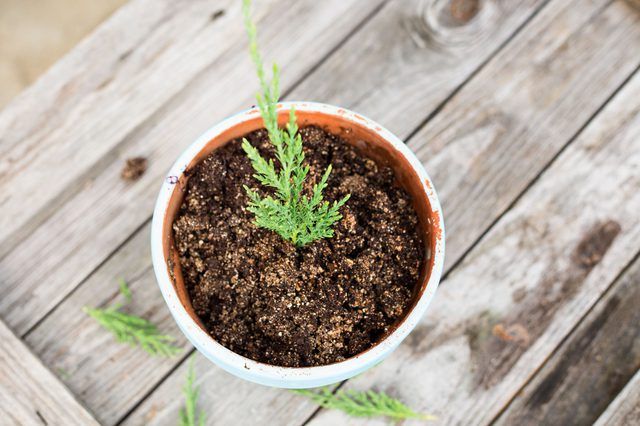
Things You'll Need
Peat moss
Perlite
Bucket
6-inch pot
Drip tray
Bleach
Bypass shears
Rooting hormone
Bowl
Plastic bag
Spray bottle
Step 1
Mix equal parts peat moss and perlite together in a bucket. Stir water into the potting mixture until it's completely moistened. Allow the mixture to absorb the water for 30 minutes, and then add more water if it still feels dry.
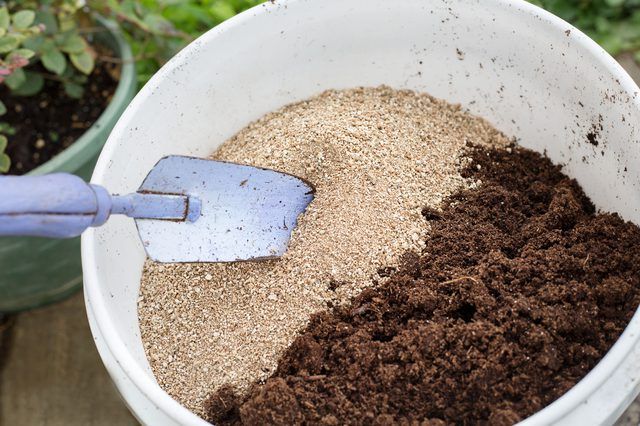
Step 2
Fill a 6-inch pot with the moistened mix. Use a pot with at least one bottom drainage hole and drip tray so excess moisture can freely drain from the soil.
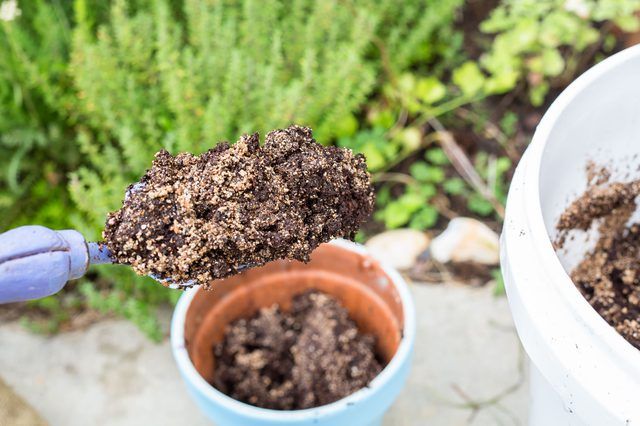
Step 3
Soak a pair of bypass shears in a solution of 1 part bleach and 9 parts water for 30 minutes to disinfect them before taking the cuttings.
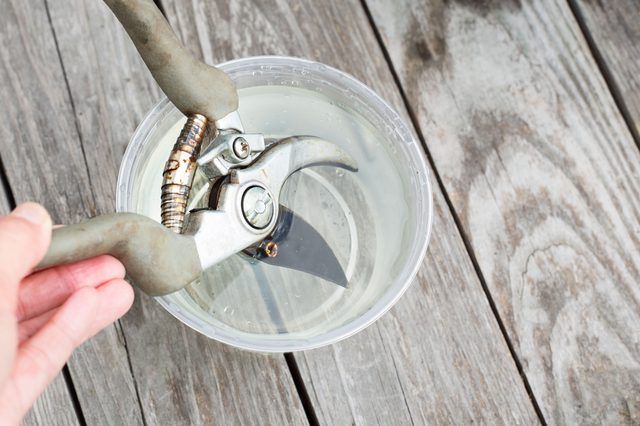
Step 4
Cut a 6-inch tip from the juniper, making the cut at the joint where the new growth joins the old branch. Select a branch from the current season's growth that has begun to harden and has produced fully mature needles.
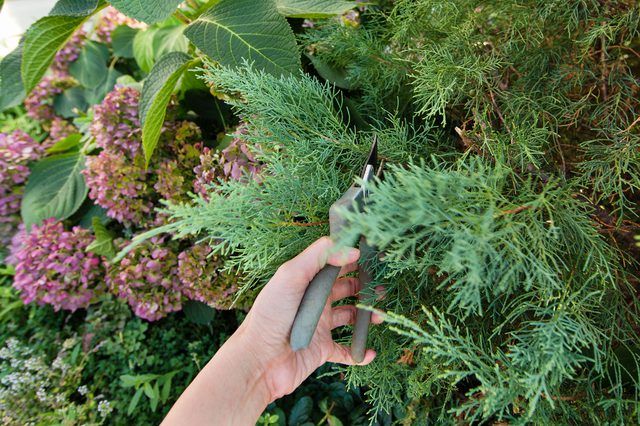
Step 5
Strip the needles from the bottom one-third of the cutting, leaving only the needles near the stem tip in place.
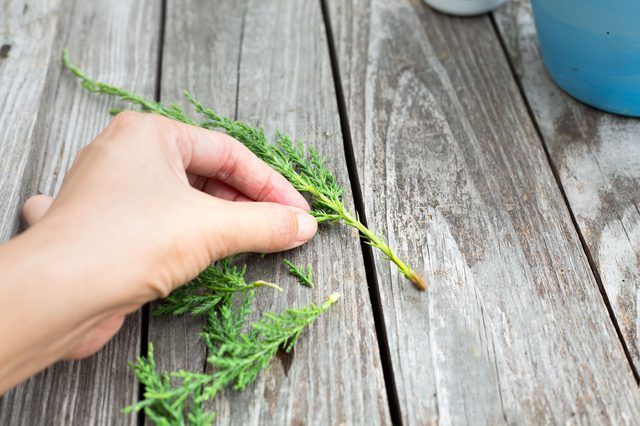
Step 6
Dilute a liquid rooting hormone IBA concentrate to 5,000 parts per million in water. Dilution rates may vary by brand, but generally mixing 1 part hormone to 1 part water in a small bowl results in the correct dilution for juniper. Dip the cut end of the juniper stem in the rooting hormone, coating it thoroughly.
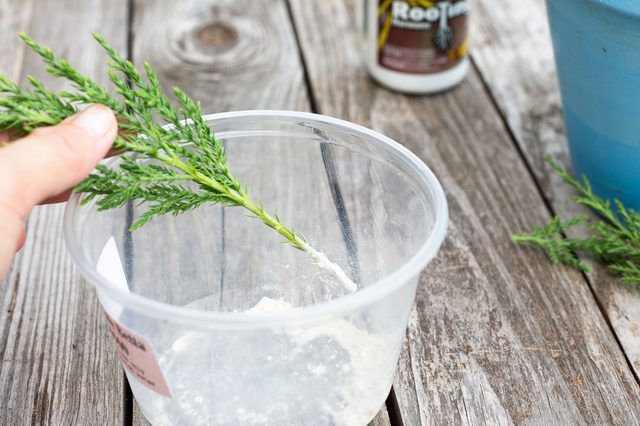
Step 7
Insert the cut end of the stem into the potting mixture, burying the lower one-third to one-half of the stem in the mixture so it remains upright. If you plant multiple cuttings in a single pot, space them 2 inches apart.
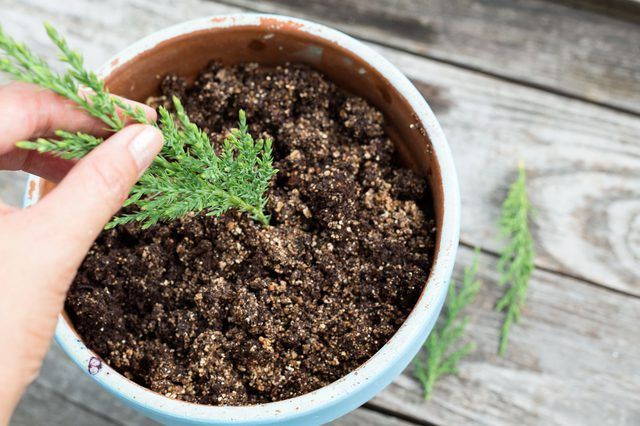
Step 8
Mist the cutting with water from a spray bottle. Cover the pot with a clear plastic bag, arranging it so it doesn't touch the cuttings. Set the pot in a warm area with bright but indirect sunlight.
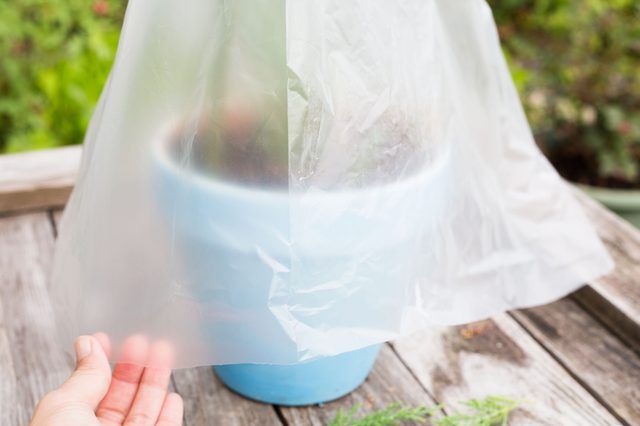
Step 9
Remove the bag and mist the cutting daily to keep it moist. Water the potting mixture if the surface begins to dry out. Empty the collected water from the drip tray after watering.
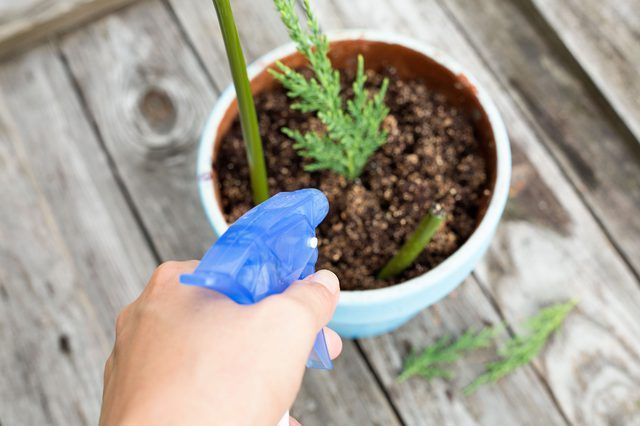
Step 10
Remove the bag once the cuttings root and begin producing new growth. Rooting time varies depending on the type of juniper, with fast-rooting varieties like "Bar Harbor" (Juniperus horizontalis "Bar Harbor"), which grows in USDA zones 3 through 9, requiring as little as four to eight weeks, while varieties like Chinese juniper (Juniperus chinensis), which grows in USDA zones 4 through 9, requiring up to 24 weeks to root successfully.
